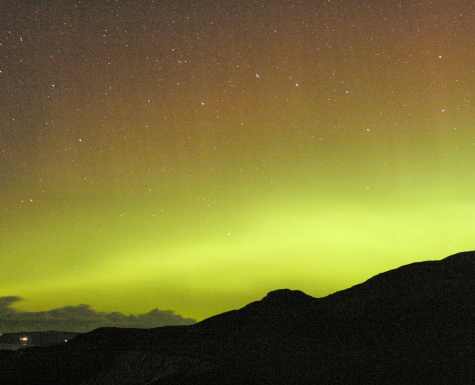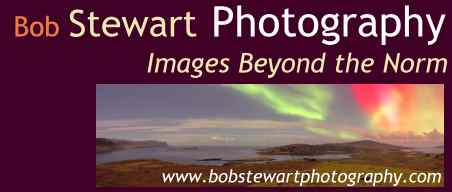


This solar storm was the best in 15 years and affected the whole northern Hemisphere, from here to South Europe and across the US. A prominent sunspot had generated a series of huge solar flares of which this was the last. Awaiting the arrival of these flares can be a time consuming process. It lasted 45 minutes.
There is no certainty that the storm will be dramatic, and none that it would outshine a full moon in the sky as it did on this day. Normally aurora images can be remarkably dreary, with only their subdued glow to light the landscape, it can be as if a neon bulb had been switched on, everything the same lurid colour.


This makes for a lot of effort with little good fortune. Northern Lights are elusive creatures, often present even on the darkest nights.
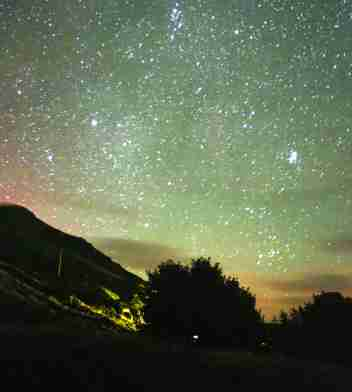
There is no relationship between the weather and solar storms, they are solely dependent on sunspot activity on the sun. They occur at all times of the year, mostly in autumn and spring for some unknown reason, but you can get the odd storm even into summer.
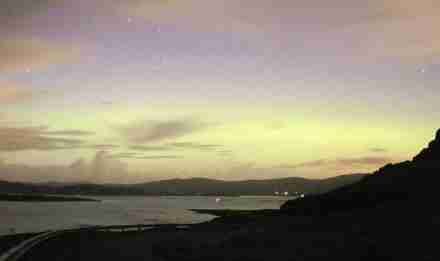
You can see them just about anywhere, but the further north the better.
This one was over the Forest of Bowland in Lancashire, not far from urban lights.
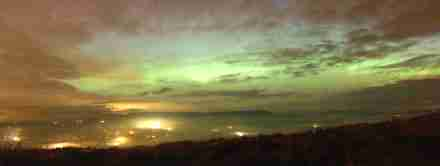
You can even find them above motorways!! This is the M6 at Lancaster.
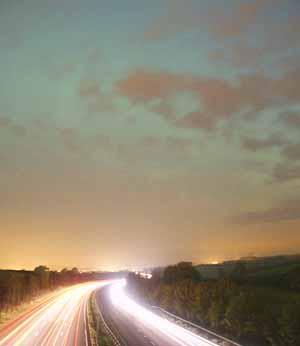
Their colour varies enormously from lurid red to neon green, mostly the ones we see are green, and frequently not particularly interesting. To the naked eye adjusted after 15 minutes in the dark they do glow, but only rarely brightly, and even more rarely in any other colour than green.
Photographing them is simply a matter of opening the shutter, and any camera can catch them even the prosumer ones, when they are bright.
Information on the Internet abounds, Spaceweather.com is probably the best, in my opinion.
That you can use it as a background in Urban settings might suprise a few people, it sure makes for an odd perspective!!
Below is a collage of the biggest Storm in 2003
